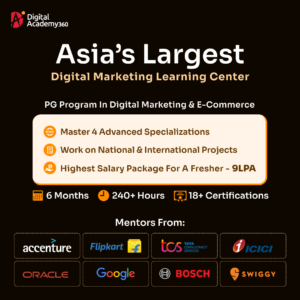If you’ve ever looked at a packaged food product or inspected a processing facility, you might have wondered: how do we know it’s truly safe? The answer often lies behind a silent guardian of food safety—ISO 22000 certification. This isn’t just another sticker or a bureaucratic tick in a checkbox. It’s a globally recognized assurance that an organization is committed to producing food that’s safe, reliable, and compliant with international standards. Honestly, it’s the invisible handshake between a company and its customers—a promise that safety comes first.
So, What Exactly Is ISO 22000?
At its core, ISO 22000 is an international standard for food safety management systems. It provides a framework for organizations across the food chain, from farms and food manufacturers to distributors and retailers, ensuring that every step of production meets rigorous safety requirements. Think of it like a traffic control system for food: it ensures that hazards are identified, risks are managed, and safety isn’t left to chance.
Here’s the thing: ISO 22000 isn’t just for big corporations. Small food producers, local bakeries, and regional suppliers can also implement it. Why? Because food safety is universal. One lapse, one overlooked contamination, and the consequences—financial, legal, and reputational—can be devastating.
Why ISO 22000 Matters for Global Recognition
You might be thinking, “Sure, food safety is important, but why does certification really matter?” Well, here’s the catch: in today’s interconnected market, having a reputation for safe practices is more than ethical—it’s strategic. ISO 22000 certification acts as a passport for market access. International buyers, regulators, and even consumers increasingly demand proof that products meet global food safety standards.
Take exporters, for instance. A company producing spices in India may have the finest quality, but without ISO 22000, international markets might hesitate. Certification signals that the organization adheres to internationally accepted safety norms, reducing barriers to entry and boosting credibility. It’s like having a universal plug adapter—you can connect anywhere without worrying about compatibility.
The Heart of the Standard: How ISO 22000 Works
ISO 22000 is designed to be practical, not punitive. It merges principles of hazard analysis and critical control points (HACCP) with a management system approach, ensuring both proactive risk prevention and systematic oversight.
Let’s break it down:
- Hazard Analysis: The first step involves identifying potential biological, chemical, and physical hazards that could compromise food safety. It’s a bit like walking through a kitchen and spotting every possible trip hazard before someone falls.
- Critical Control Points (CCPs): These are stages in the process where hazards can be prevented, eliminated, or reduced to acceptable levels. Think of it as the checkpoints in a video game—you must pass them to keep progressing safely.
- Management System Integration: ISO 22000 doesn’t stop at food production. It requires documented procedures, monitoring, verification, and continual improvement. This ensures that safety is maintained consistently, not just during audits.
- Communication and Awareness: Food safety is a team sport. Employees, suppliers, and even customers need to understand their role. ISO 22000 emphasizes communication throughout the food chain to prevent misunderstandings and lapses.
By blending these elements, ISO 22000 transforms food safety from reactive problem-solving into proactive risk management. It’s a mindset shift as much as it is a process.
Who Benefits from ISO 22000 Certification?
The ripple effects of certification extend far beyond the lab or factory floor:
- Organizations: Certification improves internal processes, reduces waste, and enhances efficiency. By preventing safety incidents, companies save both money and reputation. Plus, employees gain a clear framework for their roles, which makes everyday tasks smoother and less stressful.
- Consumers: They can trust the products they buy. Knowing that food meets international safety standards reduces anxiety about contamination or mislabeling. It’s the comfort of knowing your family’s meals are safer.
- Suppliers and Partners: Certification streamlines collaboration. Suppliers that meet ISO 22000 standards are more attractive to buyers, creating stronger, more reliable networks.
- Regulatory Authorities: Audits and inspections become more straightforward. ISO 22000 provides documented evidence of compliance, easing regulatory burden while ensuring public safety.
The Certification Journey: Steps to Achieve ISO 22000
Getting certified isn’t as mysterious as it sounds, but it requires commitment. Here’s a practical roadmap:
- Gap Analysis: Compare existing processes with certification iso 22000 requirements to identify weaknesses. This is your reality check—like checking your pantry before cooking a feast.
- System Implementation: Develop and document procedures, train staff, and integrate the hazard analysis and CCP framework into daily operations.
- Internal Audits: Conduct regular internal reviews to ensure compliance and identify areas for improvement. It’s the equivalent of a rehearsal before the big performance.
- Management Review: Leadership evaluates the system, allocating resources and making strategic adjustments. Support from the top is non-negotiable—without it, even the best systems falter.
- External Audit and Accreditation: An accredited body reviews the organization’s processes and records. Passing this stage demonstrates competence and commitment, earning the coveted certification.
- Continual Improvement: ISO 22000 isn’t a one-off achievement. Ongoing monitoring, feedback, and updates ensure the system evolves with new risks, technologies, and market demands.
Overcoming Common Challenges
Here’s the honest part: implementing ISO 22000 can feel daunting. Many organizations worry about costs, staff training, or complexity. But the truth is, these challenges are manageable with proper planning and support.
- Staff Engagement: Without buy-in, procedures can become paperwork. Training, awareness campaigns, and simple, clear documentation help embed a culture of safety.
- Resource Allocation: Investing in equipment, monitoring tools, and documentation pays off by preventing costly recalls, fines, or reputational damage.
- Supplier Coordination: Food safety doesn’t stop at the factory gate. Engaging suppliers, setting clear expectations, and verifying compliance are essential steps.
When approached pragmatically, the hurdles transform into milestones that strengthen the organization.
Real-World Impacts: Stories from the Field
Consider a small dairy producer in Europe. Before ISO 22000 certification, the company struggled with inconsistent testing and traceability issues. After implementing the standard, not only did safety improve, but their market expanded—supermarkets trusted their products, and exports became feasible. ISO 22000 didn’t just improve compliance; it became a growth engine.
Or think about seafood exporters in Southeast Asia. International buyers often require stringent safety documentation. Certification opens doors to premium markets, enhances brand reputation, and demonstrates a commitment to ethical, safe practices. It’s tangible proof that quality isn’t negotiable.
Integrating ISO 22000 with Other Standards
ISO 22000 often works hand-in-hand with other standards. For example:
- ISO 9001: Focused on quality management, ISO 9001 complements ISO 22000 by ensuring overall operational efficiency.
- HACCP: ISO 22000 incorporates HACCP principles but adds a structured management system layer, making the safety framework more robust.
- Local Regulatory Standards: Compliance with national regulations becomes simpler because ISO 22000 already embeds global best practices.
This integration reduces duplication, simplifies audits, and strengthens credibility across the board.
The Human Element: Why People Matter
You know what’s fascinating? No matter how precise the systems or advanced the technology, humans remain at the center of food safety. ISO 22000 is only as effective as the people who implement it. From line workers to quality managers, staff engagement, training, and accountability are crucial. A motivated team catches hazards early, communicates effectively, and ensures that the system isn’t just a manual on a shelf—it’s a living, breathing part of daily operations.
Future Trends in Food Safety and ISO 22000
The food industry is evolving rapidly. Automation, AI-driven quality checks, and blockchain traceability are changing the game. ISO 22000 adapts alongside these technologies, ensuring that safety and compliance aren’t left behind. Imagine a smart factory where sensors track every ingredient, every batch, and every shipment. Certification ensures that even in this high-tech environment, safety isn’t just assumed—it’s verified.
Consumer expectations are shifting too. Sustainability, transparency, and ethical sourcing are becoming critical. ISO 22000 provides a foundation for meeting these expectations while maintaining rigorous safety standards. Companies that embrace certification now are not only protecting consumers—they’re future-proofing their brand.
Wrapping It Up: Certification That Counts
ISO 22000 certification isn’t merely a badge; it’s a commitment. A commitment to safe food, reliable operations, and global recognition. It empowers organizations to access new markets, build trust with consumers, and streamline compliance. It transforms food safety from a regulatory requirement into a strategic advantage.
So, the next time you pick up a product with certified labeling, remember: there’s a complex, meticulously controlled system behind it. ISO 22000 ensures that every step, every test, every process has been scrutinized for safety and reliability. It’s not just a standard—it’s a silent promise to the world: the food you trust is truly safe. And honestly, in a marketplace where reputation is everything, that promise is priceless.





